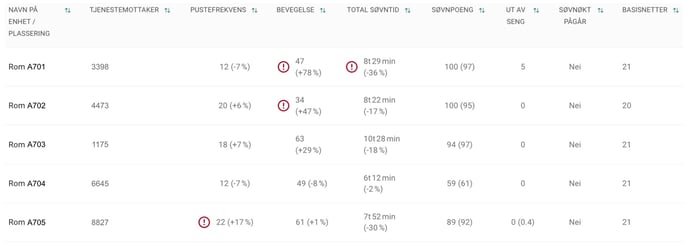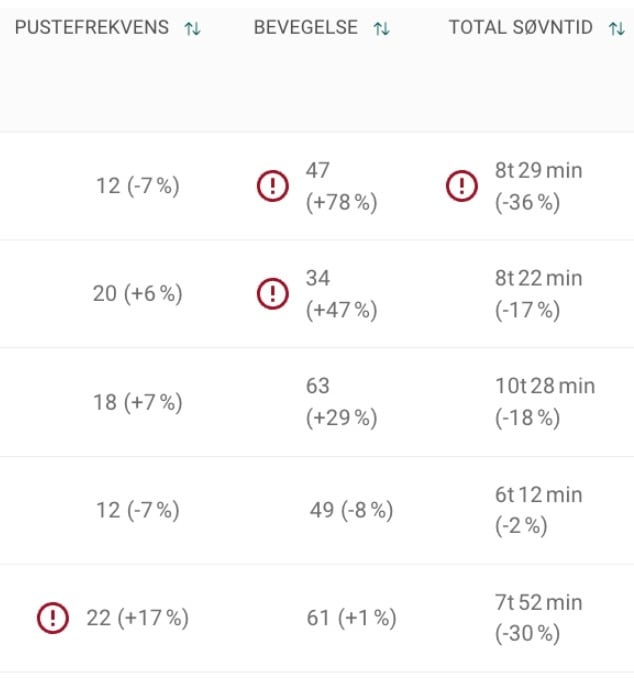This article introduces the Night Report in health.somnofy.com
The Night Report is opened under Dashboard with the button Night Report at the top right.
The night report loads aggregated data from the longest sleep session from the previous day (this may take a few seconds). You then get a timestamp for this night report at the top left and can print this snapshot via the hamburger menu at the top right.

The columns in the table show the following parameters:
- Device name: Often room number for recognizability
- Subject: Preferably something that anonymises the user, such as Gerica-ID
- Respiration rate: Average breathing rate (when service recipient is in light or deep sleep - not REM or awake)
- Movement: Displays a disturbance index as a number from 0 (no movement) to 100 (constant movement). Higher numbers mean greater unrest
- Total sleep time: Number of hours and minutes of sleep during the last sleep session.
- Sleep score: A measure of how well the subject has slept. Score from 0 (no sleep) to 100 (best sleep).
- Out of bed: Counts the number of times the subject has left the meter area, i.e. that they have gotten out of bed.
- Sleep session in progress: Information about sleep session in progress or has ended. When a sleep session is in progress, the numbers in the night report will change if the page is reloaded.
- Baseline nights: Number of nights recorded of the subject to calculate personal "normal values". A minimum of 3 base nights must be measured to show deviations in the night report. A maximum of 21 base nights are used at a time, and always the most recent 21 nights.
How to interpret the values

The average value for the last night is always shown first, followed by a percentage deviation from individual normal values (if 3 base nights have been measured).
In the picture, the first row shows a total sleep time of 8h 29min, which is 36% shorter sleep time than is typical for that person.
Likewise, a respiratory rate of 22 rpm is shown in the last row, which means an increase of 17% compared to the individual normal value for this subject.
If a value is marked with a red exclamation mark, this is a large deviation in a negative direction and should be followed up. Contact the subject to investigate the reasons for an increased breathing rate (infection, pain, poor general condition, etc.), increased movement (physical and mental restlessness, pain, frequent urination, etc.), shortened total sleep time (lying awake a lot, pain, poorer and fragmented sleep quality, etc.).
